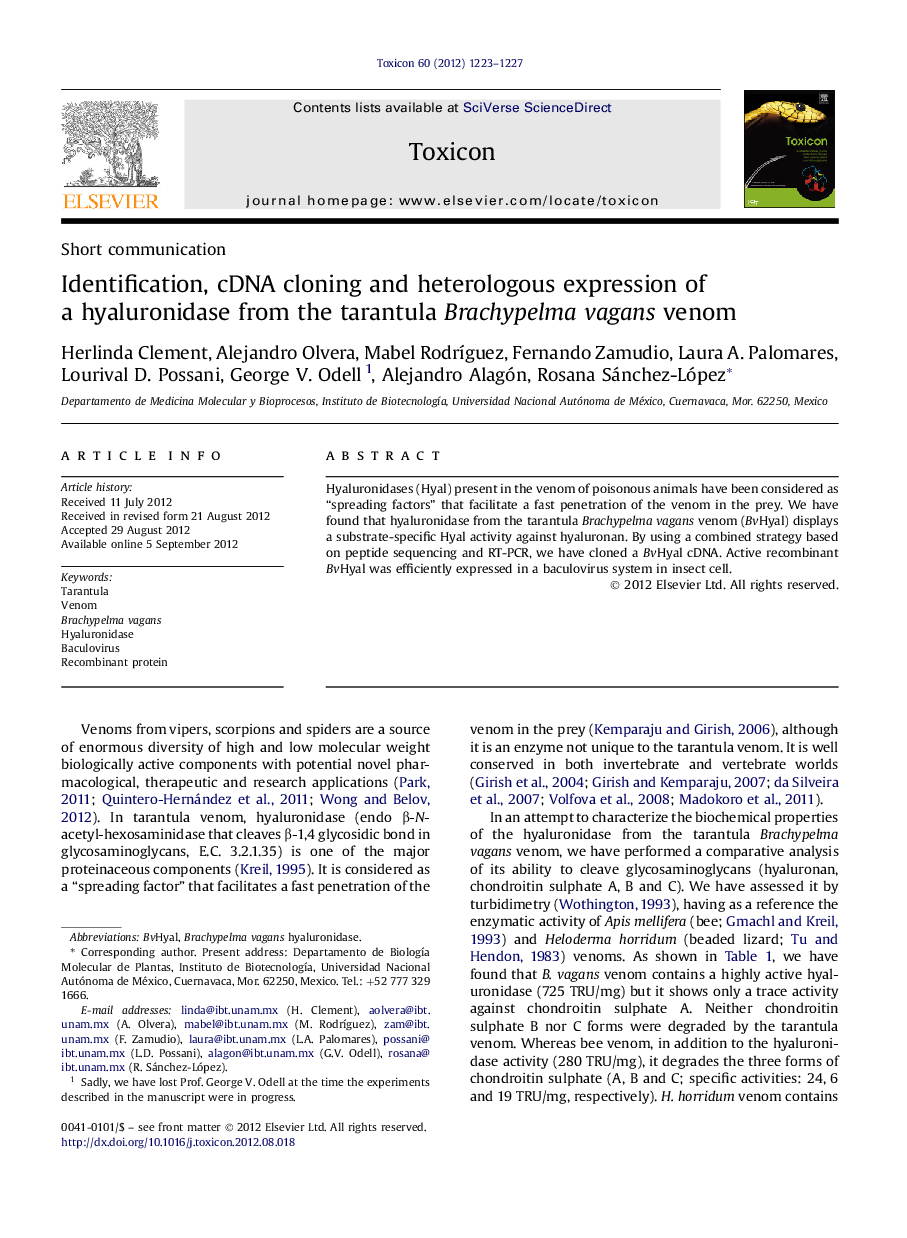| Article ID | Journal | Published Year | Pages | File Type |
|---|---|---|---|---|
| 10880113 | Toxicon | 2012 | 5 Pages |
Abstract
Hyaluronidases (Hyal) present in the venom of poisonous animals have been considered as “spreading factors” that facilitate a fast penetration of the venom in the prey. We have found that hyaluronidase from the tarantula Brachypelma vagans venom (BvHyal) displays a substrate-specific Hyal activity against hyaluronan. By using a combined strategy based on peptide sequencing and RT-PCR, we have cloned a BvHyal cDNA. Active recombinant BvHyal was efficiently expressed in a baculovirus system in insect cell.
Related Topics
Life Sciences
Biochemistry, Genetics and Molecular Biology
Biochemistry, Genetics and Molecular Biology (General)
Authors
Herlinda Clement, Alejandro Olvera, Mabel RodrÃguez, Fernando Zamudio, Laura A. Palomares, Lourival D. Possani, George V. Odell, Alejandro Alagón, Rosana Sánchez-López,
